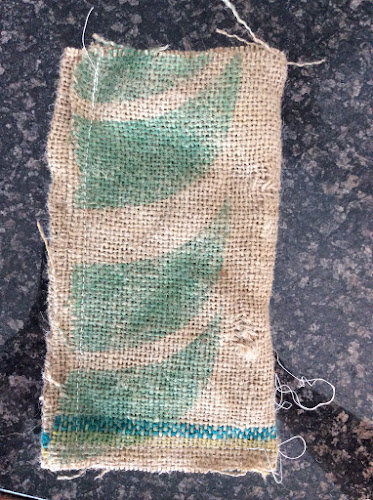AKA: Biodegradable Filter Cartridges or Compostable Filters for Freshwater Fish Tanks
I've been making my own fish tank filter cartridges for over a year now with great results. I have made them with polyester batting, and they look exactly like what I could buy in the store. But I prefer to make them with natural materials so that I don't have to throw them away when I'm done.
The cartridges are filled with all sorts of bacteria goodness and fish waste that make a PERFECT food for plants, the compost bin, and your vermicompost bin. The red wiggler worms love burlap as a bedding material so by first using it as a filter cartridge, you are turning it into super yummy food and bedding: basically the best thing ever.
My worms eat up the used filter cartridges so fast! The burlap is partially decomposed from the beneficial bacteria in the fish tank and the water that the worms are able to utilize the filter cartridge much faster than any veggie scraps.
Even if you don't have a vermicompost bin, you could still toss them into a regular compost bin or just burry them right in your garden next to a heavy feeding plant like tomato, cucumber, squash or corn. You could even burry them in a pot for a houseplant to use as slow release fertilizer!
DIY Fish Tank Filter Cartridges: A Tutorial
Gather your supplies:
- Burlap (can be an old coffee bag like I used or store bought burlap like the kind found at craft or hardware stores)
- Cotton thread (any kind or color cotton thread, twine or jute if sewing by hand. You could even pull a long thread of the burlap fabric free and use that as your thread.)
- Scissors
- Activated Carbon
- Sewing needle or sewing machine
1. First, determine how big your filter cartridge needs to be. I make make mine a little big and stuff it into the filter to give extra surface area to the beneficial bacteria. I have a Whisper filter made for 5-10 gallon tanks that has a store bought cartridge size of about 3"x5". I usually make my cartridges closer to 4"x8".
2.Cut your burlap into pieces that are double the width of your desired finished size. So, for my cartridges, I cut the burlap into 8"x8" squares.
3. Lay two squares on top of eachother, then fold the sandwich in half. Pin along two of the edges. This is where you will sew.
4. Back stitch, or knot the thread at the start, sew across one side, turn the corner and continue to sew the end of the second side. Back stitch or knot your thread.
5. Use a measuring spoon to scoop about 1 to 2 tablespoons of activated carbon into the middle of the bag. You should use more carbon if you have a larger tank.
6. Shake the carbon towards the bottom of the bag then sew the opening closed. I don't worry about frayed edges along the outside of the cartridge. As long as there are no pieces falling off and into the fish tank, the frayed edges are not problematic.
All done! I like to sew my cartridges assembly line style by cutting multiple pieces of burlap and making a half dozen or more at once. Look at all the fun colors! And these are so much cheaper to make than buying the premade kind. Rinse the filter well in water before placing it into the tank, just as you would a regular filter.
Please note: store bought cartridges often have a hard piece of plastic sandwiched between the layers. I do not worry about including it in my design though it could be easily done by skipping step 6 and using the plastic piece and clip to seal the top of the finished cartridge.
Also, I have $5 worth of goldfish and beta in my tank. I have used this design with live plants in the tank also with the same good results. While I have never had a problem in my tank, if you have a high end tank with sensitive fish, I recommend testing the water quality regularly to ensure safety for your fish.
You may also notice that it is necessary to change the filter one week or so sooner than you would a regular synthetic filter. This is because the burlap will eventually break down unlike polyester filters. This is a good thing and means that the filter is ready to become food for plants or worms.









No comments:
Post a Comment
Thanks for sharing your thoughts with me!